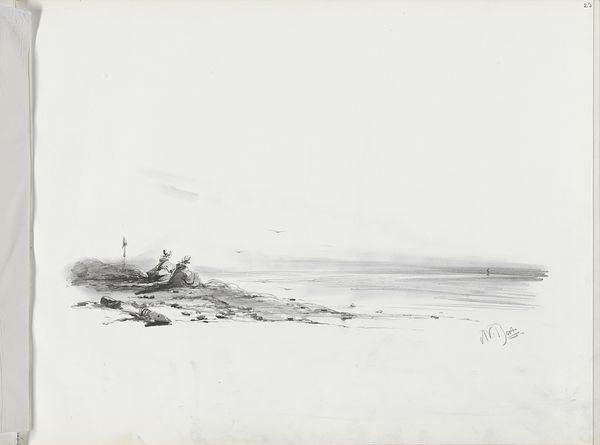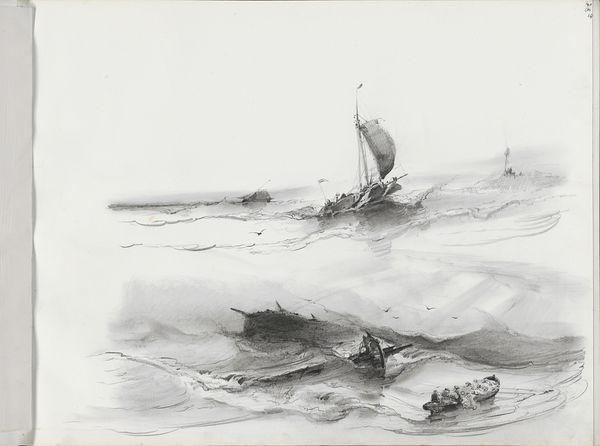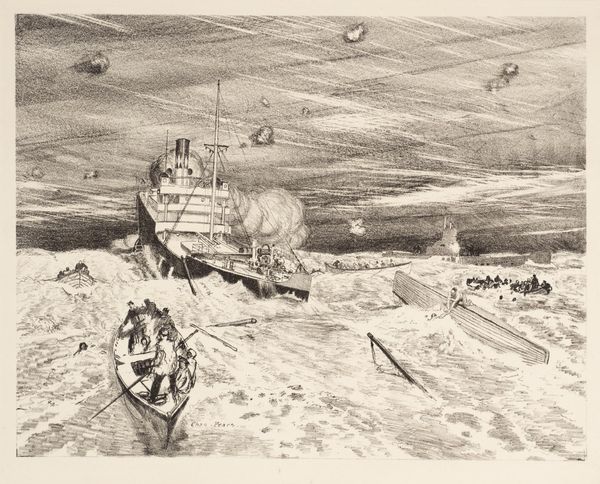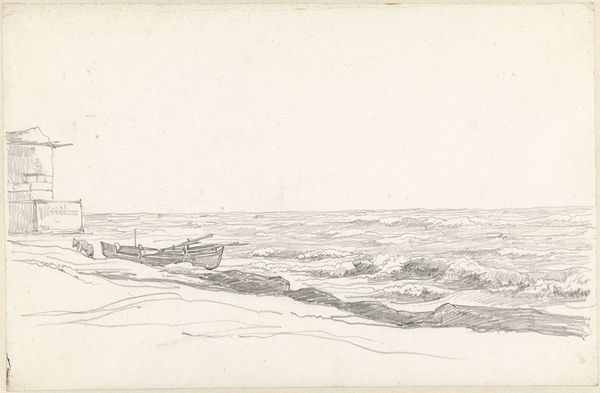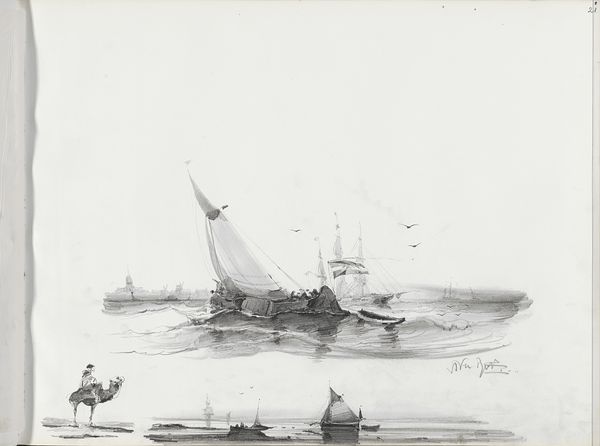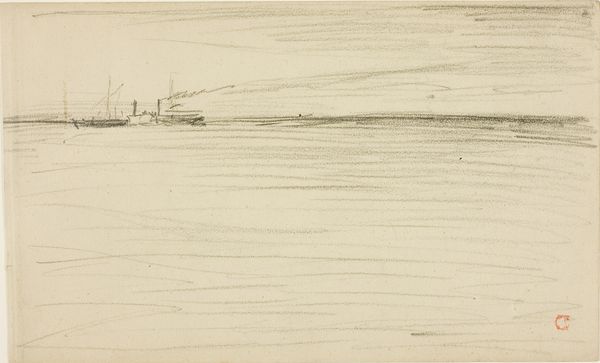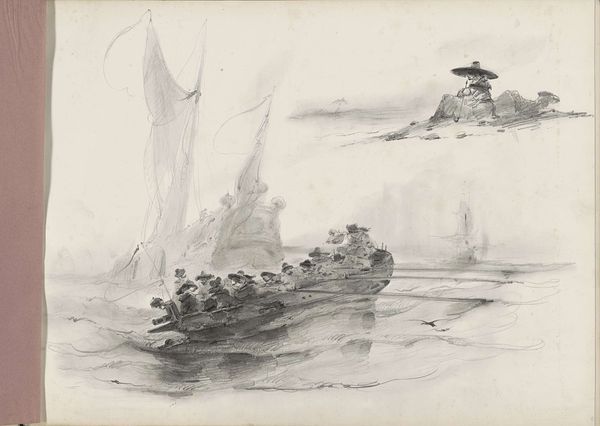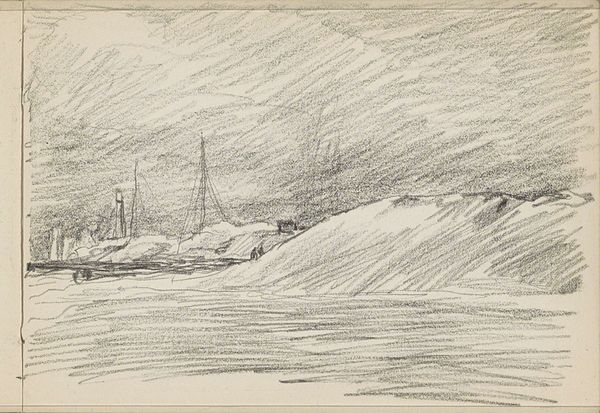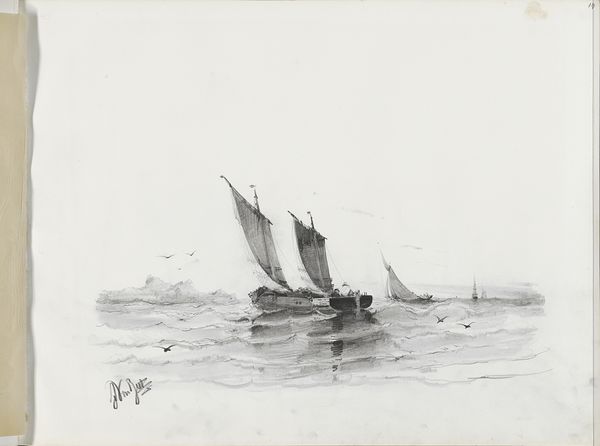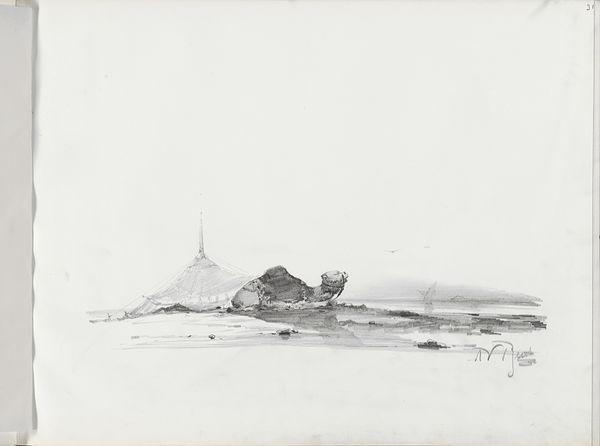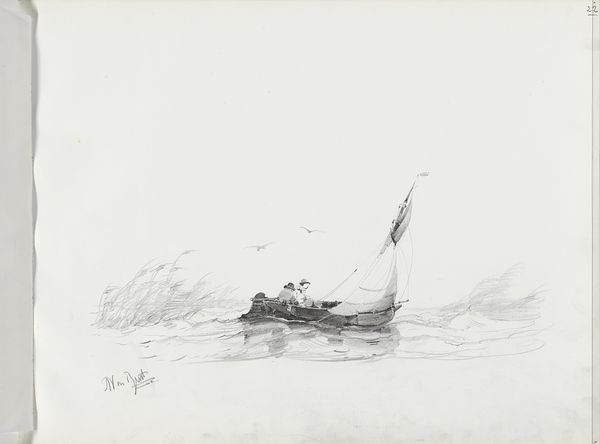
drawing, pencil
#
drawing
#
amateur sketch
#
light pencil work
#
quirky sketch
#
pencil sketch
#
incomplete sketchy
#
landscape
#
ink drawing experimentation
#
romanticism
#
pen-ink sketch
#
pencil
#
sketchbook drawing
#
fantasy sketch
#
initial sketch
Copyright: Rijks Museum: Open Domain
Editor: Okay, next up we have "Rowboat on a Rough Sea" by Albertus van Beest, likely from between 1830 and 1860. It’s a pencil drawing, and there's something quite frantic about the scene; the boat looks really tossed about. What do you see in it? Curator: This piece resonates deeply within the historical context of maritime imagery and the Romantic era's fascination with nature's power. We should look beyond the turbulent scene itself and consider what it signified in its time. Is it simply a depiction of nature, or is it about human vulnerability in the face of the sea? Editor: I suppose I hadn't thought of that. Just that the boat looked uncomfortable to be in! But vulnerability... that's interesting. Curator: Think about the societal context. Van Beest, working in this period, would have been very aware of the sea as a source of livelihood and national identity, but also of immense danger. Consider the role the sea played in Dutch society and how art served both to celebrate it and caution against its dangers. Where would an image like this been displayed, and what social functions might it have served? Editor: I see your point. It’s less a literal rowboat, more a commentary on… human limitations? Almost like the boaters were insignificant compared to the ocean surrounding them. Curator: Precisely. Also note the drawing's accessibility as a medium; it implies wider access to art than just oil paintings commissioned by the elite. Do you think it affected how ordinary citizens connected with such images? Did they possibly see a version of themselves in the tiny sailors battling an angry sea? Editor: I think so. I always imagined "high art" as being more separated from daily life, but that does bring it closer. That is… a really good point. Thanks! Curator: Of course. By viewing art as more than just aesthetic value but an artifact of its time, we get an understanding of the values, anxieties, and aspirations of those who lived with it. That, I think, is very valuable for all of us.
Comments
No comments
Be the first to comment and join the conversation on the ultimate creative platform.
